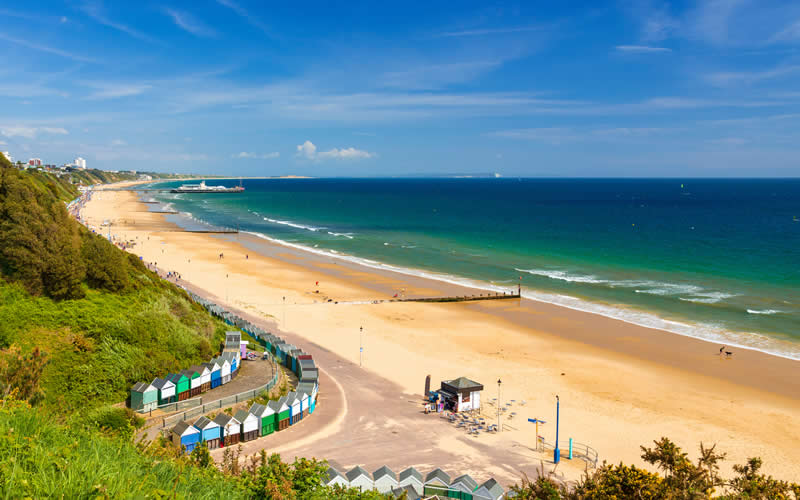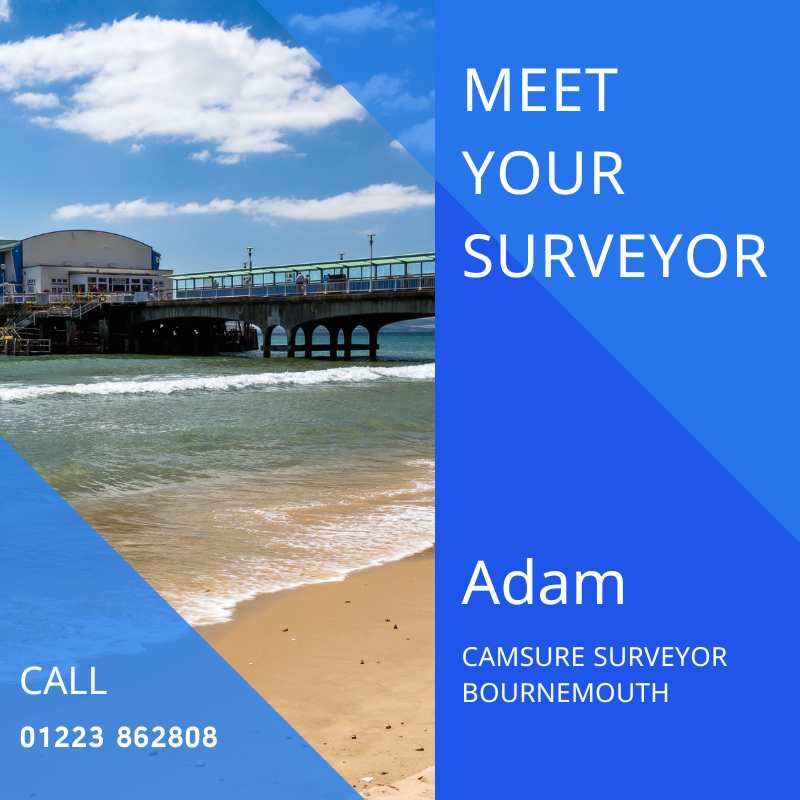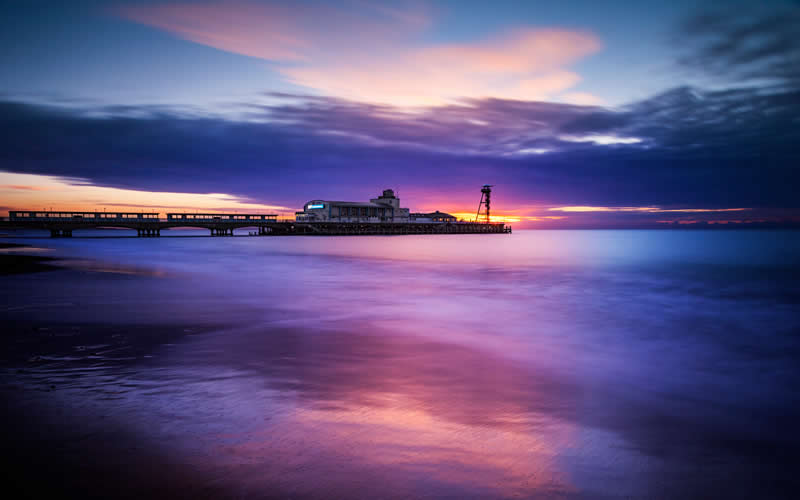What's it like living in Bournemouth?
Geography and Housing
Bournemouth, located on the south coast of England, is known for its coastline, offering views of the sea and access to several popular beaches. However, its geography also influences the local housing market in various ways. The town's proximity to the coast means property prices tend to be higher in areas closer to the sea, with many homes offering sea views, especially in locations like West Cliff and Boscombe. These areas attract both local residents and buyers from other parts of the UK seeking a coastal lifestyle.
The housing stock in Bournemouth is varied. From traditional Victorian terraces in areas such as Charminster to newer apartment blocks around the seafront, there is something for most budgets. However, despite the desirable location, there are some challenges. High property prices make it one of the more expensive areas to live in Dorset and the cost of living is also notable.
As with many seaside towns, the housing market can be volatile, with some areas seeing a rise in abandoned projects. Some large businesses have pulled out after initial renovations on properties, signalling uncertainty about the area's economic future. This could affect the long-term value of properties, leaving buyers concerned about future returns on investment.
Unique Attributes of Bournemouth
Bournemouth has a history as a seaside resort, with roots dating back to the Victorian era when it became popular as a health and holiday destination. Its beaches are its most celebrated feature, regularly attracting large numbers of tourists, particularly in the summer months.
However, despite these elements, Bournemouth faces several challenges. Many locals report frustrations with the town's infrastructure, particularly with parking and street life. Some areas, especially around the town centre, suffer from overcrowding, making the environment less desirable for families. The higher-than-average crime rate also contributes to an uneasy atmosphere. In 2023, Bournemouth had a crime rate of 83 per 1,000 people, significantly higher than the rest of Dorset, raising concerns for residents about safety. Furthermore, drug use, homelessness and anti-social behaviour are commonly reported, affecting the town’s reputation and quality of life.
Neighbourhoods and Amenities
Bournemouth's range of neighbourhoods offers potential buyers different choices, but with varying advantages and disadvantages. The town centre and surrounding areas are busy, with plenty of shops, cafes and restaurants, making it a practical location for many. However, as noted by locals, the area can feel crowded at times, especially with the high levels of tourism and street activity. For families, this could be a drawback, as there is less space for children to play safely in the street and car vandalism and break-ins are reported more frequently.
The university's presence in Bournemouth also contributes to a large student population, which can influence the town's culture and social atmosphere. While this provides energy to some areas, it may not appeal to everyone, particularly those looking for a quieter, family-oriented environment.
The lack of adequate infrastructure in some parts of Bournemouth—particularly in relation to housing, parking and street maintenance—has been a subject of concern for both residents and potential buyers. Additionally, the high cost of living means families must consider whether the quality of life justifies the price tag.
Architectural Traits and Building Materials
Bournemouth's architecture is a mix of traditional and modern styles. The town has many Victorian and Edwardian properties, especially in areas like Westbourne and the East Cliff, characterised by grand buildings made from brick and stone. These homes often have a coastal influence with high ceilings, bay windows and spacious interiors, ideal for those who want a traditional aesthetic.
Alongside these older properties, there has been significant development in recent years, with a rise in contemporary apartment blocks, particularly near the beach and the town centre. These newer homes are typically constructed with modern materials such as concrete, glass and steel, offering minimalist designs. However, this modern development is often at odds with the town's traditional seaside character, leading to mixed opinions among local residents.
Flooding Risk and Radon Levels
As a coastal town, Bournemouth is susceptible to flooding, particularly in areas close to the seafront or along the Bournemouth and Poole coastal areas. Properties in these areas should be carefully examined for their vulnerability to flooding during heavy rains or storms. Flood risk assessments should be considered before purchasing property, as certain locations, particularly near the river or coastline, are more likely to experience water damage during extreme weather conditions.
Radon levels in Bournemouth are also an important consideration. Radon, a naturally occurring gas, can pose health risks when present in high concentrations within a building. While some areas of Bournemouth are not particularly affected by high radon levels, it is recommended that homebuyers in the area get a radon test to ensure the property is safe.
Transportation and Connectivity
Bournemouth is well-connected by road, rail and bus, offering potential homebuyers easy access to other parts of Dorset and beyond. The A338 road connects the town to the M27 and the wider South Coast region, making it a practical location for those commuting to larger cities such as Southampton or London.
Bournemouth’s train station offers regular services to London Waterloo, with journey times of around two hours, as well as routes to other parts of the south of England. Public transport services within the town are also readily available, providing an affordable and convenient way to get around.
Education and Family Life
For families looking to settle in Bournemouth, the town offers a range of schools, both primary and secondary, as well as further education opportunities. Bournemouth is home to several well-regarded schools, including St. Peters School and Bournemouth School for Girls. However, the high student population can sometimes create a more youthful atmosphere in the town, which may or may not align with the preferences of potential buyers looking for a family-oriented environment.
Families will also find plenty of parks, recreational spaces and activities in and around the town, making it a suitable location for those with young children. However, the crowded, urbanised atmosphere, coupled with the challenges of crime and anti-social behaviour, may detract from the town's appeal for families seeking a quieter, secure environment.
Comparison with Nearby Areas
When compared to neighbouring towns like Poole or Christchurch, Bournemouth offers a busier atmosphere, though it is often more chaotic due to its high tourism levels. Poole, for example, tends to have a quieter, more family-friendly environment, with a focus on boating and outdoor activities. Christchurch is smaller, offering a more tranquil lifestyle with excellent schools and a focus on community living.
Ultimately, while Bournemouth has its attractions—such as the beach, good transport links and a variety of amenities—it’s important for potential buyers to consider whether the challenges, such as the high crime rate, environmental issues and potential future economic decline, align with their long-term housing plans and lifestyle expectations.
Best places to live in Bournemouth?
Westbourne
Westbourne has a mix of Victorian and Edwardian homes. It’s known for its independent shops, cafes and a lively feel. The area is popular with young professionals and families, with easy access to both the beach and the town centre.
Canford Cliffs
Canford Cliffs is an upscale area with larger homes. It’s a quieter place, ideal for those who prefer a more suburban lifestyle, but still close to the beaches of Sandbanks and good local services.
Southbourne
Southbourne offers a more laid-back lifestyle with good access to the beach. It’s a popular area for families, with schools and a strong community feel. It’s a quieter choice, but still close enough to the town centre.
Talbot Woods
Talbot Woods is a sought-after area with large homes, ideal for families and professionals. It’s near Bournemouth University and offers parks, shopping and easy transport links, making it a convenient place to live.
Boscombe
Boscombe has been undergoing significant changes in recent years. It offers a variety of housing options, from older properties to new developments. It’s close to the beach and the Boscombe Pier area, making it a good choice for those who enjoy being near the sea.
Winton
Winton is an affordable area, popular with students and young professionals. It offers a range of properties and is well-connected by public transport. It’s also home to local shops and services.

















